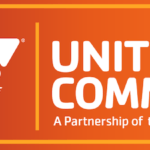The Reality of Teaching in Hospitals
Teaching medicine isn’t easy. Teaching medicine under pressure is even harder.
Rounds are fast. The pager never stops. Patients are waiting. Meanwhile, a group of medical students or residents is watching, asking, and hoping you’ll explain everything clearly—while still doing your job.
In this environment, educators can feel like they have no time to teach. But teaching doesn’t need to take hours. With the right tools, it takes less time, not more.
You don’t have to be the loudest person on the floor. You don’t have to run a perfect lecture. You just need a few simple methods that work under stress.
Why Teaching Still Matters During Busy Shifts
In medicine, learning often happens on the job. According to the Association of American Medical Colleges, over 60% of medical learning occurs during clinical care. That means the hospital is the classroom.
But when pressure builds, teaching is often the first thing to go. That’s a mistake. Residents and students who don’t get feedback or structure become unsure. They guess more. They stop asking questions.
That’s not safe.
Educators need fast, effective ways to keep teaching even when things get hectic. That’s where tools come in.
Tool 1: The One-Minute Pre-Round Primer
This tool is simple. Before seeing a patient, ask your learner:
- “What’s the plan?”
- “What’s one thing you’re unsure about?”
Give them 60 seconds to talk it out. You’ll spot gaps fast. You’ll also give them a chance to think before jumping into the room.
This works even when time is short. It turns hallway walks into learning time.
Tool 2: The Four-Question Framework
Andre Posner, a hospitalist and educator, created a system to help residents stay focused. He noticed they often rambled or froze when asked to present.
His fix? A repeatable, four-question structure:
- What’s the main problem today?
- What’s your working diagnosis?
- What are you watching for?
- What’s the plan?
These questions give residents a roadmap. It cuts out filler. It keeps them sharp. And it takes under two minutes.
Posner explains: “I started using it during rounds. The same people who struggled before suddenly got confident. They weren’t guessing—they were thinking.”
It works because it builds a habit. It removes the fear of forgetting what to say. It lets learners focus on the medicine.
Tool 3: The Five-Second Rule
When you ask a learner a question, don’t speak right away. Count to five.
Most educators don’t realise how quickly they jump in. Silence feels awkward, so they fill it. But when you fill it, your learner doesn’t get a chance to think.
The five-second pause gives them space to sort their thoughts. It also signals that you’re not rushing them. That makes a huge difference under pressure.
Try it once and you’ll see the impact.
Tool 4: Real-Time “Why” Moments
Too many educators just say, “We’re going to order this test,” or “Let’s admit this patient.” That’s helpful—but only if you say why.
Teach out loud. Say:
- “I’m ordering this because I’m ruling out X.”
- “We’re holding off on antibiotics because we don’t have enough data yet.”
Explaining your thinking doesn’t take extra time. You’re already making the decision. Saying it out loud gives learners insight into how you reason, not just what you do.
This builds clinical thinking. It also builds trust. Learners see that decisions aren’t random—they’re intentional.
Tool 5: Micro-Debriefs
After a difficult case or rapid decision, pause for one minute with your team.
Ask:
- “What went well?”
- “What would you do differently next time?”
You don’t need a sit-down debrief. You need a quick reset. Micro-debriefs build reflection into the workflow. They also help students process complex cases in real time.
When emotions are high, these pauses help people feel seen. They reduce stress. They help turn pressure into learning.
Tool 6: Mistake Sharing
This one takes courage.
Share a time when you made an error—or almost did—and what you learned. It could be small. It could be from years ago. But say it out loud.
When educators act perfect, learners go silent. When educators are honest, learners open up.
Mistake sharing builds safety. It shows that smart people make errors. And it models how to recover.
Andre Posner said it best: “No one remembers the doctor who knew everything. They remember the one who made them feel like they could figure it out.”
How to Make These Tools Stick
Keep it Repeatable
Pick one or two tools. Use them every day for a week. Once they become routine, add another.
Use the Hallway
Don’t wait for perfect teaching moments. Use transitions—before rounds, after consults, in the lift. Learning happens everywhere.
Give Feedback Without Delay
If someone nails a presentation, say so. If they miss something, tell them quickly and clearly. Feedback is fuel. Don’t save it for reviews.
Get Feedback Too
Ask your learners:
- “What’s helping you?”
- “What’s still confusing?”
Small changes in your approach can make a big difference in their learning.
Final Thoughts
Teaching under pressure doesn’t mean less teaching. It means teaching smarter.
When educators use clear tools, learners thrive—even in chaos. They stop guessing. They start thinking. They ask better questions. They take better care of patients.
Teaching in medicine is never optional. But it doesn’t have to be overwhelming.
Start with one tool. Try it today. Build from there.
Clear. Simple. Repeatable.
That’s how real teaching happens. Even under pressure.
Throughout the year, our writers feature fresh, in-depth, and relevant information for our audience of 40,000+ healthcare leaders and professionals. As a healthcare business publication, we cover and cherish our relationship with the entire health care industry including administrators, nurses, physicians, physical therapists, pharmacists, and more. We cover a broad spectrum from hospitals to medical offices to outpatient services to eye surgery centers to university settings. We focus on rehabilitation, nursing homes, home care, hospice as well as men’s health, women’s heath, and pediatrics.
Disclaimer: The content on this site is for general informational purposes only and is not intended as medical, legal, or financial advice. No content published here should be construed as a substitute for professional advice, diagnosis, or treatment. Always consult with a qualified healthcare or legal professional regarding your specific needs.
See our full disclaimer for more details.







